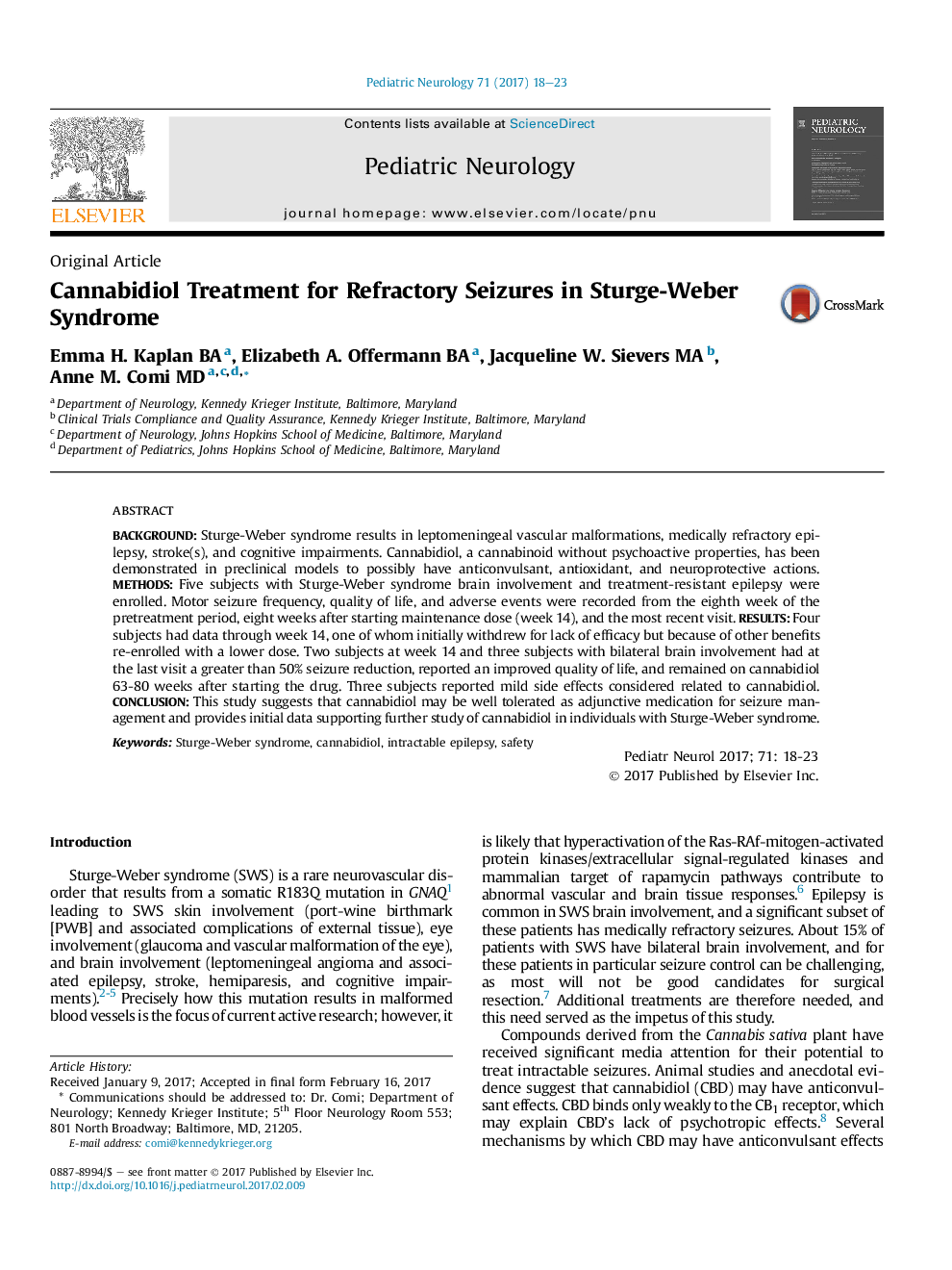| Article ID | Journal | Published Year | Pages | File Type |
|---|---|---|---|---|
| 5632824 | Pediatric Neurology | 2017 | 8 Pages |
BackgroundSturge-Weber syndrome results in leptomeningeal vascular malformations, medically refractory epilepsy, stroke(s), and cognitive impairments. Cannabidiol, a cannabinoid without psychoactive properties, has been demonstrated in preclinical models to possibly have anticonvulsant, antioxidant, and neuroprotective actions.MethodsFive subjects with Sturge-Weber syndrome brain involvement and treatment-resistant epilepsy were enrolled. Motor seizure frequency, quality of life, and adverse events were recorded from the eighth week of the pretreatment period, eight weeks after starting maintenance dose (week 14), and the most recent visit.ResultsFour subjects had data through week 14, one of whom initially withdrew for lack of efficacy but because of other benefits re-enrolled with a lower dose. Two subjects at week 14 and three subjects with bilateral brain involvement had at the last visit a greater than 50% seizure reduction, reported an improved quality of life, and remained on cannabidiol 63-80 weeks after starting the drug. Three subjects reported mild side effects considered related to cannabidiol.ConclusionThis study suggests that cannabidiol may be well tolerated as adjunctive medication for seizure management and provides initial data supporting further study of cannabidiol in individuals with Sturge-Weber syndrome.
